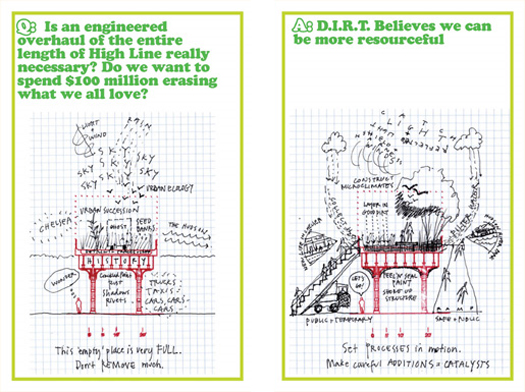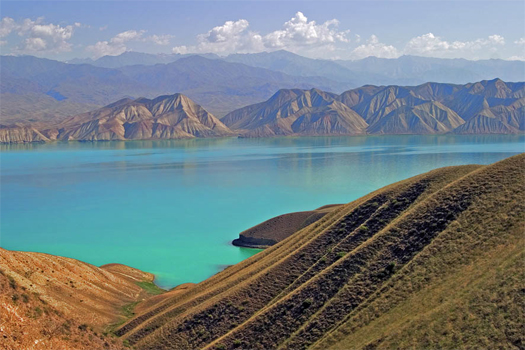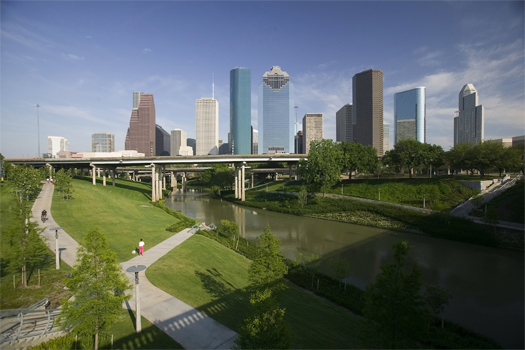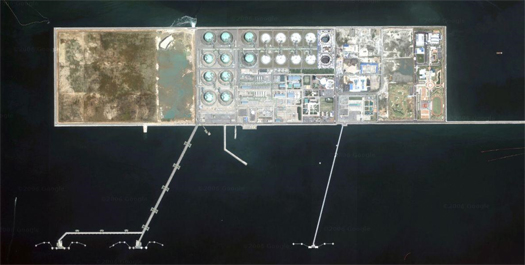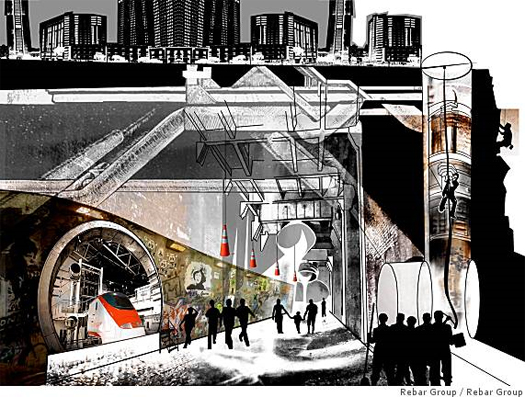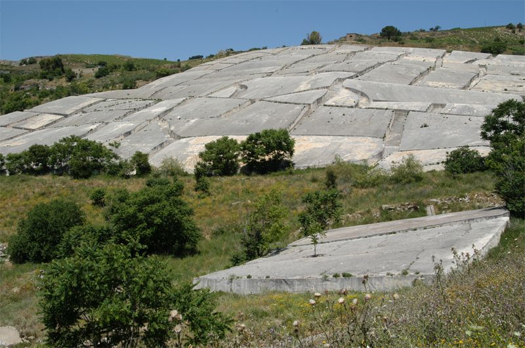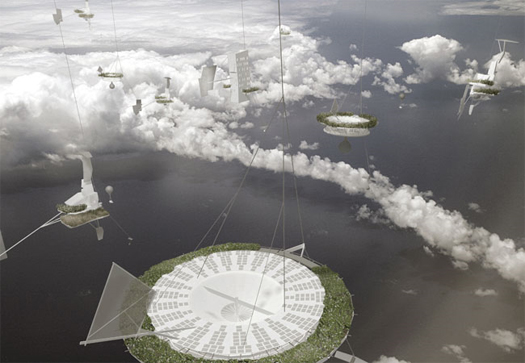
Studio Lindfors, who previously proposed blimps as an inflatable emergency extension of the metropolis for the What if New York City… design competition, speculate further about the inhabitation of the air in their entry to [bracket], “Cloud Skippers”:
Imagine a community of adventurous pioneers who leave the Earth’s surface to drift and glide amongst the clouds in machine-like dwellings, self-sufficient and free from trappings of everyday life as we know it…
Staying afloat requires work. A delicate equilibrium must be maintained to remain anchored in the air. Abrupt shifts in weight can dislodge a Cloud Skipper from the jet stream – low levels of rainwater storage or sloppy waste management, excessive hoarding or rapid shifts in population – any dramatic change may result in a loss of altitude, or worse, a precipitous fall to Earth. The unique emphasis on weight shapes a new economy with its own values and currency. Gravity banks deal in kilos of crops, or gallons of water, in lieu of more traditional monetary loans. As material over-consumption may have catastrophic consequences, money as we know it is redefined.
Cloud Skippers must also take into account the constant shifting of the jet stream’s course. With no solid connection to the ground below, the idea of community is re-imagined. Assuming a nomadic nature, Cloud Skippers fly whichever way the winds take them. Through such trials and demands, a strong, fluid bond develops among Skippers in their efforts to survive in such a precarious environment. Balance is emphasized, manifested in a collective responsibility of the entire community and reinforced by personal discipline as well as respect for the limits of one’s environment and the needs of one’s neighbors.
That, of course, is the utopian version. There are other possibilities, perhaps no less fascinating, but certainly not as pleasantly communal, as might be suggested by the history of earth-bound nomadic peoples (the near-constant struggle between the Tuareg and whatever governments claim their portions of the Sahara at any given time, for instance). Terrestial governments might not be so willing to cede their airspace or rain to the Cloud Skippers, while the tight communal discipline required to eek out existence in the harsh environment of the jet stream could as easily lead to clannish fragmentation as to a heightened sense of responsibility towards neighbors.
[see also mammoth’s own sloppily documented entry to [bracket], which suggests harnessing the wind in a completely different fashion]

